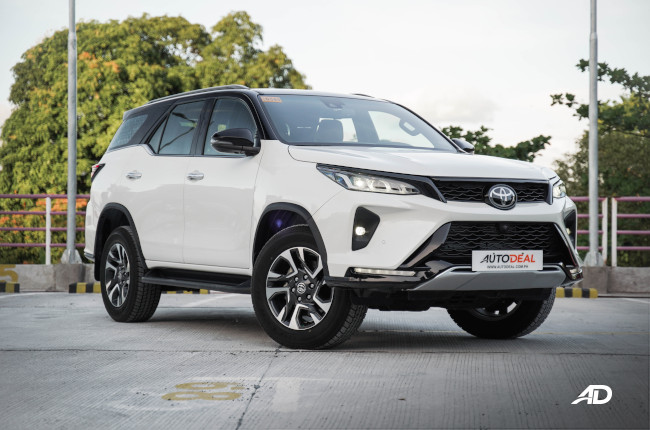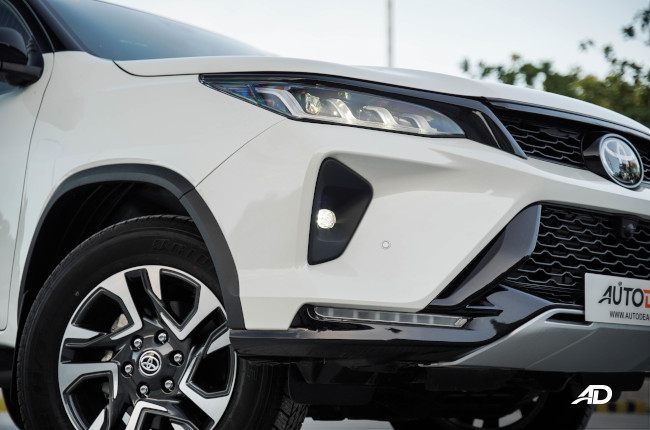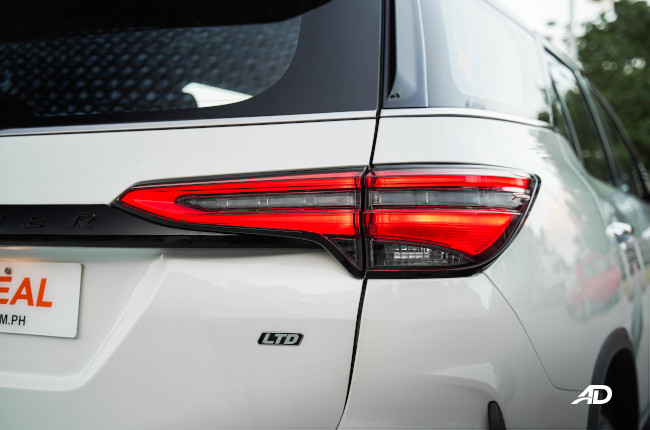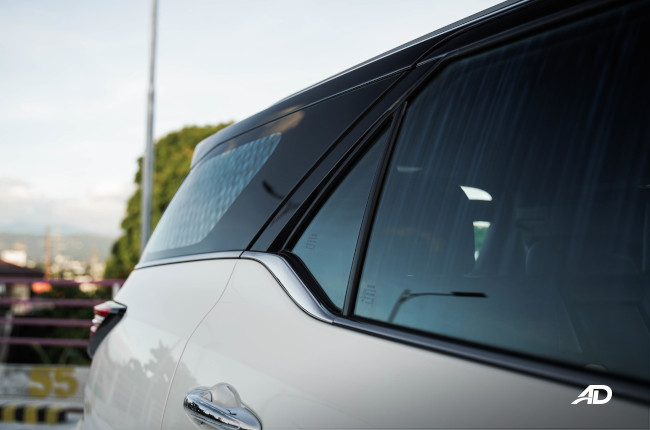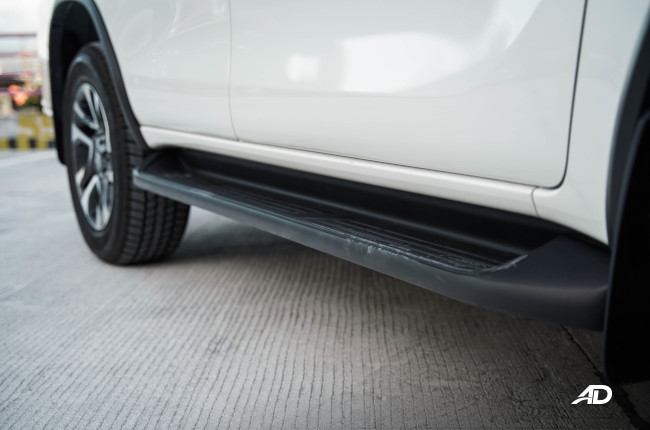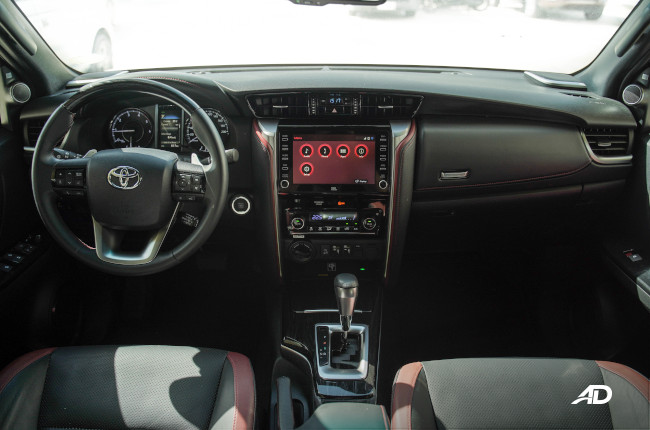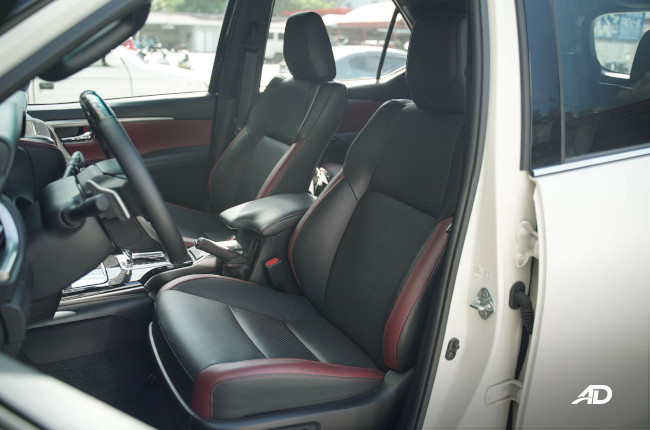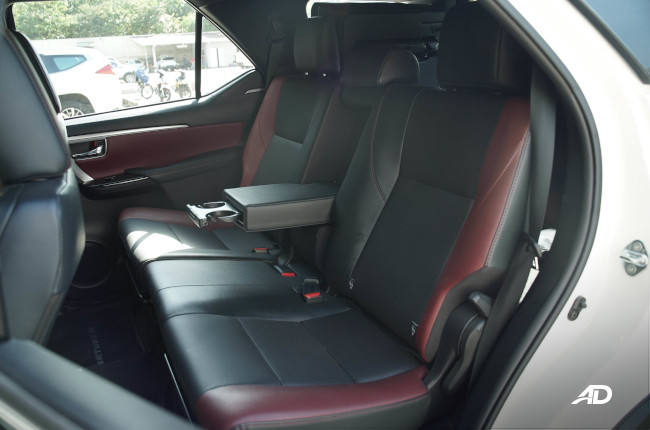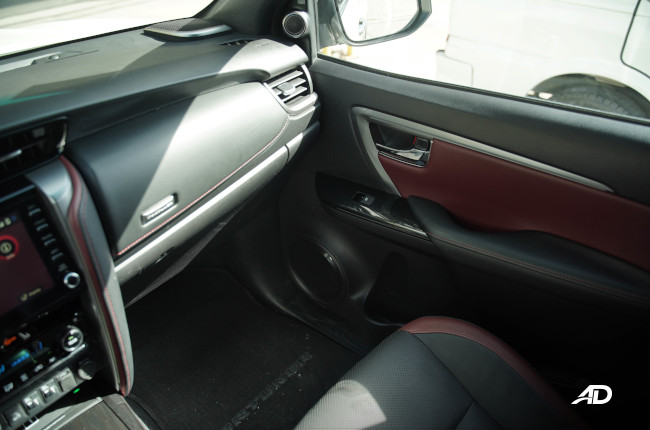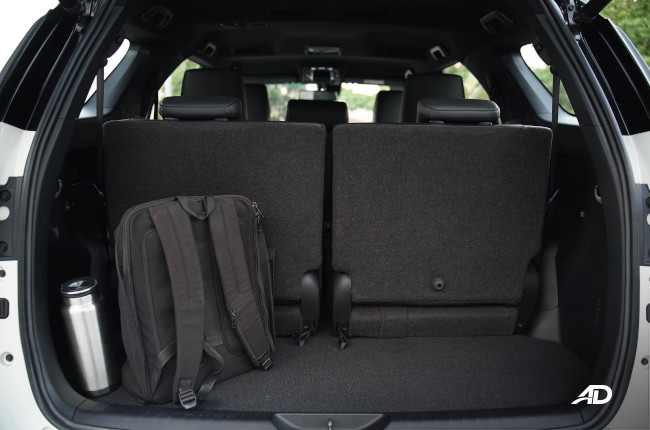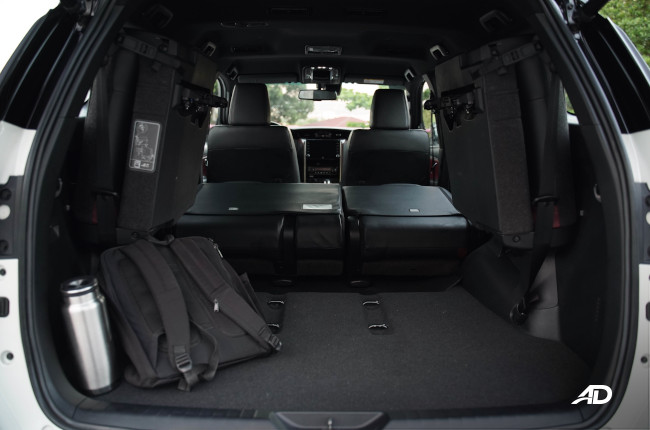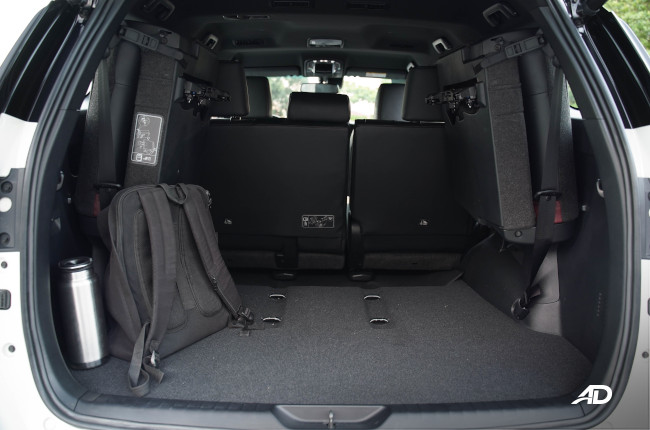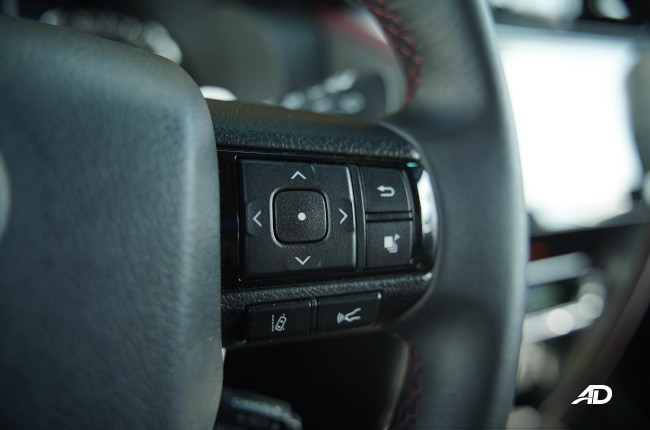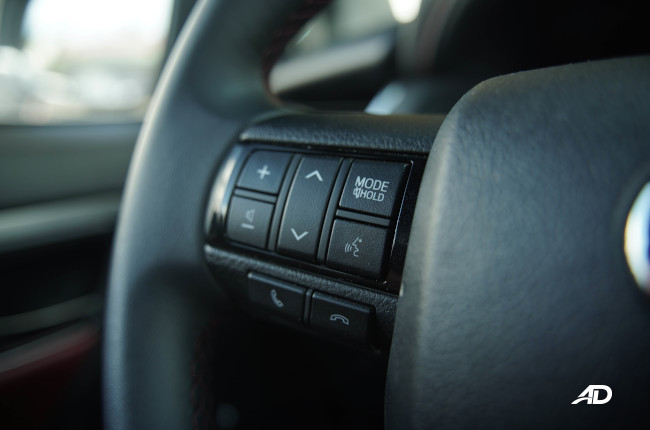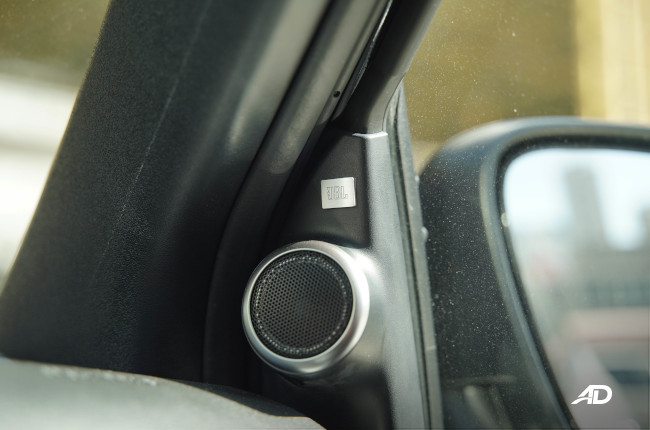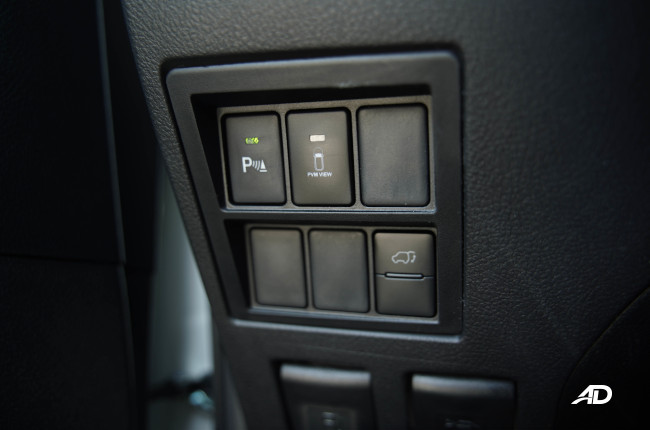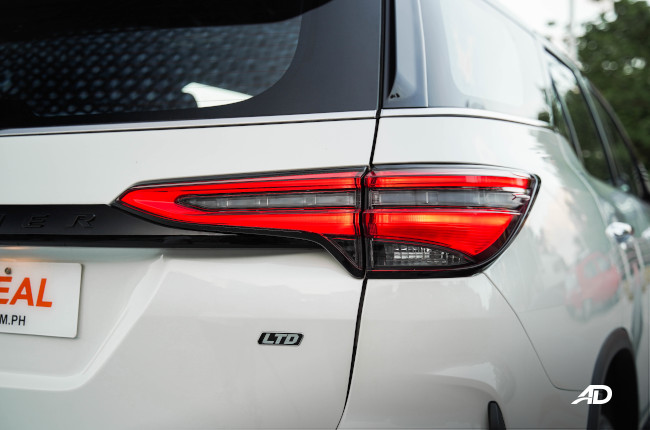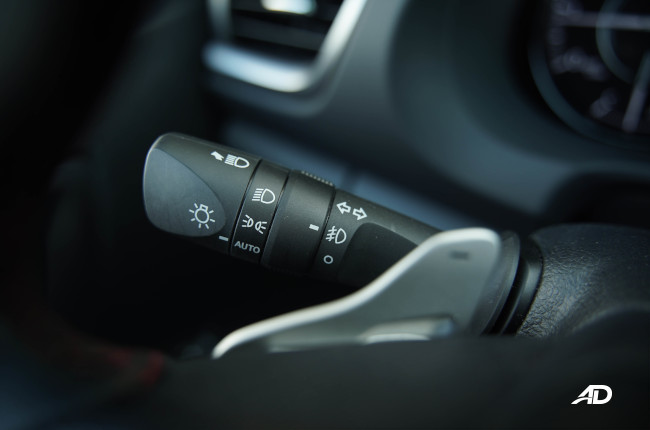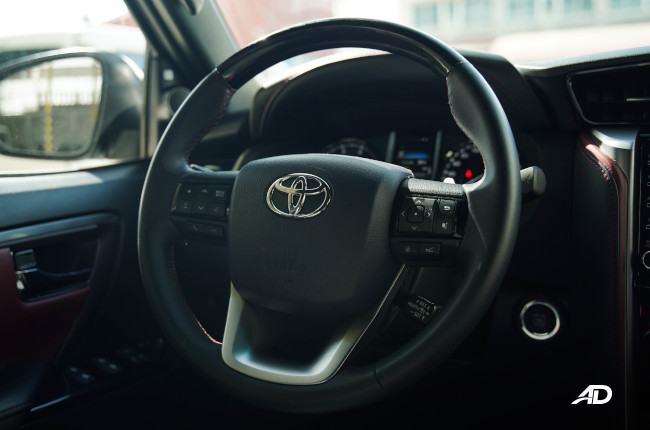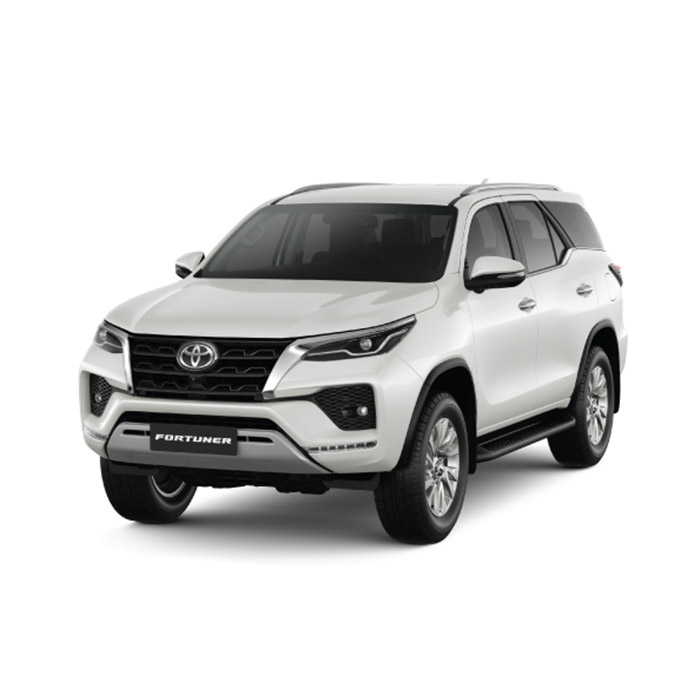
Contents
Oh, Toyota. No matter what other manufacturers do, every car is almost always a hit, if not a best seller. The Fortuner is just one Toyota to assert its dominance in the segment, hastily outselling the competition even prior to the update. It’s the best-selling SUV of the brand in the Philippines, but it wasn’t without its flaws.
A few years prior, there were quite a few people that will be quick to complain about the Fortuner’s lack of comfort, specs, and tech features. So much so that those people ended up with a different brand and model altogether. The Toyota Fortuner ended up being the most sought-after model after 2017’s excise tax fiasco, but now that the dust has settled and consumer’s heads are clearer, is this new top-of-the-line Fortuner LTD worth the price of admission?
Engine Output (HP), Acceleration, Transmission, Handling 4.5/5
Exterior & Interior Design, Quality, Fit and Finish, Ergonomics 4.0/5
Cabin Comfort, Suspension, NVH Insulation 4.0/5
Convenience Technologies, Active and Passive Safety Features 4.5/5
Amount of the vehicle you get for the price, Fuel Efficiency 3.0/5
Exterior
Some say that the Toyota Fortuner LTD looks like a Geely Coolray, and they’re not wrong, but they’re not right at the same time. How can you make something with fixed-in design hardpoints? The Toyota engineers did a good job on the LTD in our opinion. It’s futuristic and has a nice balance of aggressive and classy. Of course, if you’re a fan of the previous face, fret not as Toyota still carries the lightly facelifted versions, namely the G, V, and Q variants.
Though, unlike those setups, it gets a full array of LEDs for the headlights, foglights, and rear lamps, all designed in very stylized housings. The grille is also finished in black, slimmed down a bit over the lower variants, and a wide mouth has been slapped on for a more dramatic front face. The result is the angriest Fortuner ever. We will lament that the positioning of the turn signals is quite low, but then it’s an SUV with 193 mm of ground clearance and 18-inch alloys, so it should be good enough to spot in most situations.
The style upgrade makes the Fortuner a much nicer package compared to the pre-facelift. We’d actually venture to say that it is one of the most striking in its segment now, but is it worth the price? That remains to be seen.
Interior
While the exterior got a huge facelift, the interior is mostly the same story. Instead of the dark brown upholstery we’ve come to love, Toyota thought that sporty was the way to go, and fitted its seats and dashboard with dark red leather. It’s not gaudy by any means, but it does make us question whether this vehicle is geared towards more luxurious pursuits or sportier driving.
That being said, the dashboard is the same, save for the infotainment screen, which we will touch upon later. The seating arrangement and the leg and headroom for passengers are also unchanged. If you felt cramped in the back of the pre-facelift, then it’s the same story here. The rear cargo area still holds the same amount of volume prior, with the third-row seats sapping away precious horizontal space like before.
Still, however, it’s no generic interior. The Fortuner’s dash shares a similar template to that of the Hilux, but it’s good to note that the model gets ventilated seats in addition to the electronic adjustment. However, we will have to note that we were a bit bored looking at the interior of the LTD, simply because it is just the same story with a few different trimmings. If you’re used to the interior of a Fortuner and lust after it without regard, then this model will definitely satisfy you—provided you’re also a fan of red accents.
Comfort

So with a reputation as—uh colored as the Fortuners, we’re pleased to say that the ride of the LTD finally stacks up against the rest of the competition. It’s not crossover- or minivan-smooth, but rather, it’s much better compared to the G variant we reviewed before this top-spec offering. It’s similar to the situation of the Hilux G and Conquest variants. The G’s ride is much bumpier compared to the Conquest, and the Fortuner nameplate follows suit.
The only downside is that you have to pay a lot of money to get the comfort level we were able to find in the Fortuner LTD, but even the lower variants easily make mincemeat out of wind noise suppression, as the NVH here is also top-notch. Road noise does creep in, but it’s nothing intrusive at all.
Technology
On its spec sheet, you will find that Toyota has been paying attention to the rest of the market when it comes to tech features. People want an SUV that is easier to drive, and Nissan helped solve that with the Terra’s around-view monitor. Now present in the Toyota camp, however, the execution leaves something to be desired. The resolution of the camera is somewhat lackluster, which resulted in video output that was quite blurry even in broad daylight. It’s not unusable, and Toyota was also kind enough to retain the parking sonars in the front and rear to help, but we would have liked to see a more robust system with higher-resolution cameras.
However, we will note that the 9-speaker JBL sound system paired with the new 8-inch Toyota infotainment system is quite usable with a bit of pixel density to spare. That being said, the screen is clear and it’s quite a shame that the 360-degree camera couldn’t take advantage of the clarity. You also get Apple CarPlay and Android Auto into the mix which pairs flawlessly with your smartphone. If you’re not plugged in, however, or if your passenger needs a pick-me-up, there is a wireless charging pad in the center console. Speaking of charging, you only get two 2.1 amp charging points at the rear.

Of course, how can we forget the Toyota Safety Sense suite, which includes the magical adaptive cruise control? Then, of course, it has a push start system with smart entry. That being said, on paper, the Fortuner LTD is a well-equipped car, but in practice, it’s acceptable. It wasn’t knock-your-socks-off impressive, to say the least.
Safety

On the safety front, the Fortuner LTD comes standard with Driver, front passenger, side, and curtain airbags bringing the total number to 6. Native to the LTD variant, Toyota’s Safety Sense package comes bundled with a Pre-Collision System, Lane Departure Alert, and Adaptive cruise control. Other safety features include ABS with brake assist and EBD, vehicle stability control, hill-start assist control, downhill assist control, seatbelts for all passengers with a reminder, the Toyota Vehicle Security System, and ISOFIX tethers.
It’s a well-padded spec sheet all things considered.
Driving

With its 2.8-liter turbodiesel engine, the Fortuner produces enough power to rival the leaders of the segment, but in a gruntier package. The 201 horses shine on the highway, with enough passing power coursing through the 6-speed automatic transmission. The gearbox shifts smoothly but is slow to react to inputs from the paddles or the shift lever, which is not that big of a deal considering it is an SUV. The Fortuner LTD also features power and eco modes which sharpen up the throttle response, but that’s about it.

Handling is the same as before, with weighty steering and quite a bit of body roll in the corners. The added power helps it on the straights and accelerating in the city, but the top-heaviness of the Fortuner just shows. It’s not unruly, but you do notice that things can get quite boaty if you choose to send it in the twisties—our recommendation is don’t, but you can.

However, given that it is an SUV, it drives admirably. We never thought that we would have as much fun revving out the diesel engine, but every stab of the throttle only rewarded us with some much-loved torque and power. Toyota has done a great job to make the engine of the Fortuner fun again. If you weren’t satisfied with the 2.8-liter’s performance in the past, just wait until you get to drive this revision.
Fuel Economy

In the city, we were able to score 8.5km/L. When things opened up on the highway the figure inched closer to 16 km/L. In the city, it's pretty much on par with the rest of the competition, but not as great as we had hopped for on the highway. It could be that we were having a bit too much fun with the torque of the darned thing.
Verdict and Price

So to conclude, the Fortuner LTD drives great, but still carries some of the quirks that the old model had. We can’t blame Toyota for this simply because the Fortuner was such a hit, and drastically changing the interior layout among other things would have driven the price up even further.
That leads us to our final note: the price. It’s not cheap. It’s actually quite expensive. In fact, it is the most expensive in its class coming in at P2,404,000 then add P10,000 for the White Pearl Crystal Shine. It doesn’t look like a great deal now, does it?
Still, however, we’re noticing that midsize SUVs are growing in features, but at the same time, increasing in price. Even the Mitsubishi Montero Sport in its GT trim—a viable alternative, costs over P2,000,000. So too does the Nissan Terra, and the Ford Everest. Here’s the thing, at the time of this review’s publishing, the Fortuner is the newest of the bunch, and perhaps it would be wise to see what the other models come up with in terms of a rebuttal. However, if you do find yourself wanting a Fortuner, then this is the model to get. So far, it’s the best Fortuner, the only thing holding it back is the offerings in the other camps that seek to address its issues. Whether you’re sold or on the fence, it’s certainly the king of its lineup, and possibly the SUV segment in the Philippines.
Exterior Photo Gallery
Interior Photo Gallery
Specifications
Engine
2.8 LFuel Type
DieselPerformance
201 hp @ 3,400 rpmTransmission
Automatic-
Summary
-
Name Toyota Fortuner 2.8 Q 4x2 AT - Platinum White Pearl Mica Body Type SUV Price ₱2,215,000 Transmission Category Automatic -
Engine
-
Engine Size 2.8 L Displacement 2,755 cc Number of Cylinders 4 Number of Valves 16 Transmission Type 6-Speed Automatic -
Performance
-
Drivetrain Rear-Wheel Drive Max Output (hp) 201 hp @ 3,400 rpm Max Torque (nm) 500 Nm @ 2,800 rpm -
Economy & Environment
-
Fuel Type Diesel Emissions Standard Euro 5 Fuel Capacity 80.0 L *Combined Fuel Consumption 12.3 km/L *Autodeal Review
-
Dimensions
-
Length 4,795 mm Width 1,855 mm Height 1,835 mm Wheelbase 2,745 mm Turning Circle 12 m Ground Clearance 193 mm Trunk Capacity 200 L Number of Doors 5 Number of Seats 7 -
Safety & Security
-
Driver's Airbag 1 Front Passenger's Airbag 1 Side Airbag 2 Curtain Airbag 2 Knee Airbag 1 Auto Brake System Electronic Brake Distribution Anti-lock Brake System (ABS) with Electronic Brakeforce Distribution and Brake Assist
Immobilizer Security Alarm Stability Control Electronic Door Locks Speed Sensing Door Locks ISOFIX Lane Departure Warning System Blind-Spot Detection System -
Features
-
Cruise Control Front Parking Sensors Rear Parking Sensors Leather Upholstery Push Start Button Wheel Size 18 in Wheels Metal Type Alloy Airconditioning System Auto Climate Control Front and Rear Entertainment System 8-inch display audio with 6 speakers Connectivity Apple Carplay/Android Auto/AM/FM/Bluetooth/USB/ Voice Command Navigation Ready Warranty 3 Years (100,000 km) Keyless Entry Roof Rack Sunroof Electric Adjustable Seats Power Steering Power Windows Power Outlet Steering Wheel Audio Control -
Technology
-
Active Park Assist Hill Start Assist AWD Modes n/a Tire Pressure Monitoring Heads-up Display Power Liftgate Start-stop System
Colors
Latest Review
-
2025 BYD Seal 5 DM-i Premium Review / Review
We test-drove the BYD Seal 5 DM-i, and its features and affordable price make it a strong hybrid sedan contender.
4.2 / 5 -
Addictively excessive: The Ford Ranger Raptor Twin Turbo V6 / Review
The Ford Ranger Raptor Twin Turbo V6 is one crazy pickup truck. Wondering why? Just keep reading.
4.6 / 5 -
The Kia Carnival gives you more: More seats, more comfort, and more practicality / Review
The Kia Carnival is a three-row MPV designed for executives and families. It combines comfort, technology, and practicality, making it a strong choice for those looking for a premium people...
4.2 / 5
Popular Articles
-
Cheapest cars under P700,000 in the Philippines
Jerome Tresvalles · Sep 02, 2024
-
First car or next car, the Ford EcoSport is a tough package to beat
Jun 18, 2021
-
Car Maintenance checklist and guide – here’s everything you need to know
Earl Lee · Jan 12, 2021
-
Most fuel efficient family cars in the Philippines
Bryan Aaron Rivera · Nov 27, 2020
-
2021 Geely Okavango — Everything you need to know
Joey Deriquito · Nov 19, 2020
-
Family cars in the Philippines with the biggest trunks
Sep 20, 2023
-
Head to head: Toyota Rush vs. Suzuki XL7
Joey Deriquito · Oct 28, 2020
-
Why oil changes are important for your car
Earl Lee · Nov 10, 2020
-
2021 Kia Stonic — What you need to know about it
Joey Deriquito · Oct 16, 2020
-
Top 7 tips for buying a used car in the Philippines
Joey Deriquito · Nov 26, 2020


